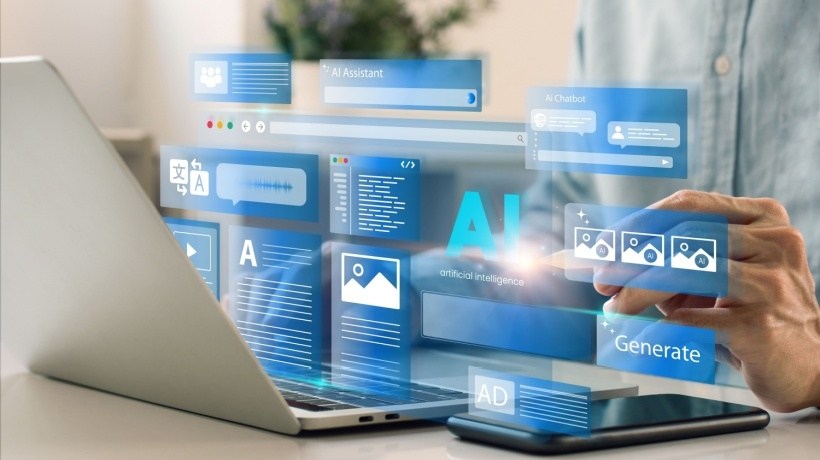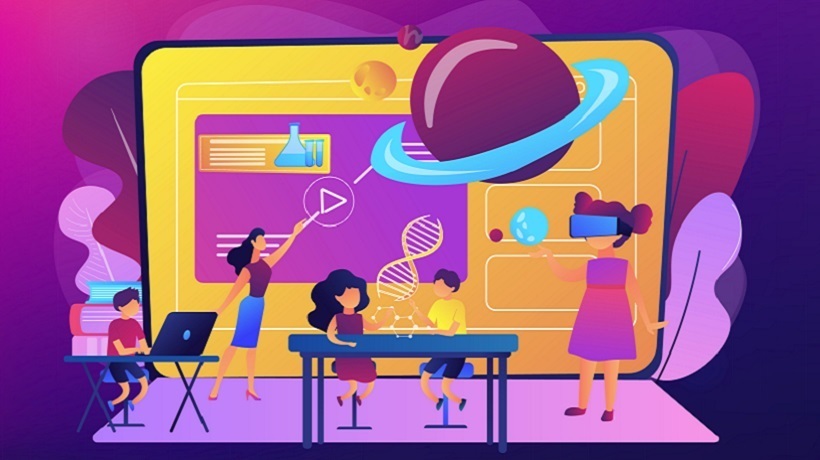Strategies For Adapting To Change, Integrating AI
In the uncharted terrain of the new industrial revolution, educators find themselves at the nexus of innovation and responsibility, standing as architects of a future where education and technology unite seamlessly. The profound shift propelled by the integration of Artificial Intelligence (AI) and advanced technology beckons educators not just to adapt but to proactively engage in shaping a landscape that empowers students as architects of their own technological future. This paradigm shift transcends the mere pace of change; it demands educators to embody the spirit of lifelong learning, integrating AI as collaborative partners to promote digital literacy, encourage collaboration, foster a growth mindset, address ethical considerations, create future-ready curricula, and establish professional learning communities. Together, these strategies lay the foundation for a generation poised to excel in the dynamic, interconnected world shaped by the new industrial revolution.
Integrating AI In 8 Strategies: A Guide For Educators
1. Embracing Lifelong Learning
In navigating the unpredictable landscape of the digital era, you must transcend the conventional role by embodying the spirit of lifelong learning. This beckons you to be a perpetual learner, cultivating a dynamic educational environment where adaptability is not just taught but lived. By embracing emerging technologies, you foster a culture of curiosity, resilience, and growth.
2. Integrating AI As A Teaching Assistant
The integration of AI as a teaching assistant signifies a transformative leap. Beyond mere automation, it represents a partnership between human expertise and machine efficiency. Freed from administrative burdens, you can become a mentor focused on honing critical thinking and creativity. This way, the classroom transforms into a dynamic space where technology enhances the human touch, creating a more personalized and effective learning experience.
3. Promoting Digital Literacy
Digital literacy extends beyond technical skills—it encompasses ethical engagement with the digital world. You play a pivotal role in guiding your students to navigate the intricate landscape of information, promoting fair and responsible use of technology. By fostering an understanding of global digital ethics, you empower students to be conscientious contributors to the ever-evolving digital discourse.
4. Encouraging Collaboration And Problem-Solving
Collaboration becomes not just an educational strategy but a mindset. You should orchestrate collaborative projects that mirror the interdisciplinary nature of real-world challenges. By infusing technology into collaborative endeavors, your students will learn to leverage diverse skill sets and harness technology as a powerful tool for innovative problem-solving—an indispensable skill in a tech-driven future.
5. Fostering A Growth Mindset
The acknowledgment of a growth mindset transcends pedagogy—it becomes a foundational philosophy. You clearly instill in students the belief that challenges are opportunities for growth, particularly in an era of rapid technological evolution. So, project-based learning and exposure to real-world applications become avenues for students to witness the tangible impact of their evolving skills on complex, real-world challenges.
6. Addressing Ethical Considerations
Initiating discussions around ethical considerations becomes a cornerstone of technology education. In this case, you become a facilitator of critical conversations. So explore the global ethical dimensions of technology—topics like data privacy, algorithmic bias, and responsible AI use. By fostering ethical awareness, you contribute to shaping a generation that approaches technology with a robust ethical framework.
7. Creating Future-Ready Curricula
The ongoing review and evolution of curricula become a dynamic process of future-proofing education. Align educational frameworks with the ever-changing demands of the job market, integrating coding, data literacy, and emerging technology subjects across disciplines. This ensures that students not only graduate with foundational knowledge but possess the agility to adapt to evolving technological landscapes.
8. Establishing Professional Learning Communities
The creation of professional learning communities becomes a nexus of shared knowledge and collective intelligence. Through collaborative communities, exchange experiences, resources, and best practices. This collaborative approach ensures that the benefits of technological integration are disseminated widely across educational institutions, creating a collective reservoir of expertise.
Conclusion
As you embark on this transformative journey, always forge the path toward a future where education and technology converge harmoniously. Through collaborative efforts, you will empower each individual mastermind in your classroom, not merely to be technologically literate, but to contribute meaningfully to the ever-evolving digital landscape. This journey unfolds as a narrative of continuous learning and innovation, laying the groundwork for a generation prepared to excel in the dynamic, interconnected world shaped by the new industrial revolution.
Now is your moment to embrace this transformative journey with passion and commitment. Let us champion innovation, foster collaboration, and instill a passion for continuous learning in our classrooms for the public benefit! Together, we can mold a generation that doesn't just navigate the digital era but defines it. The future of education is in our hands—let's shape it with purpose and commitment.
Embrace the challenge, empower minds, and build a future where education and technology unite for the betterment of our world. Always remember that an interconnected and AI-driven world needs more educated people who understand the implications and ethical considerations surrounding technology. Embrace knowledge, wield technology responsibly, and shape a future where wisdom guides our interconnected journey.








